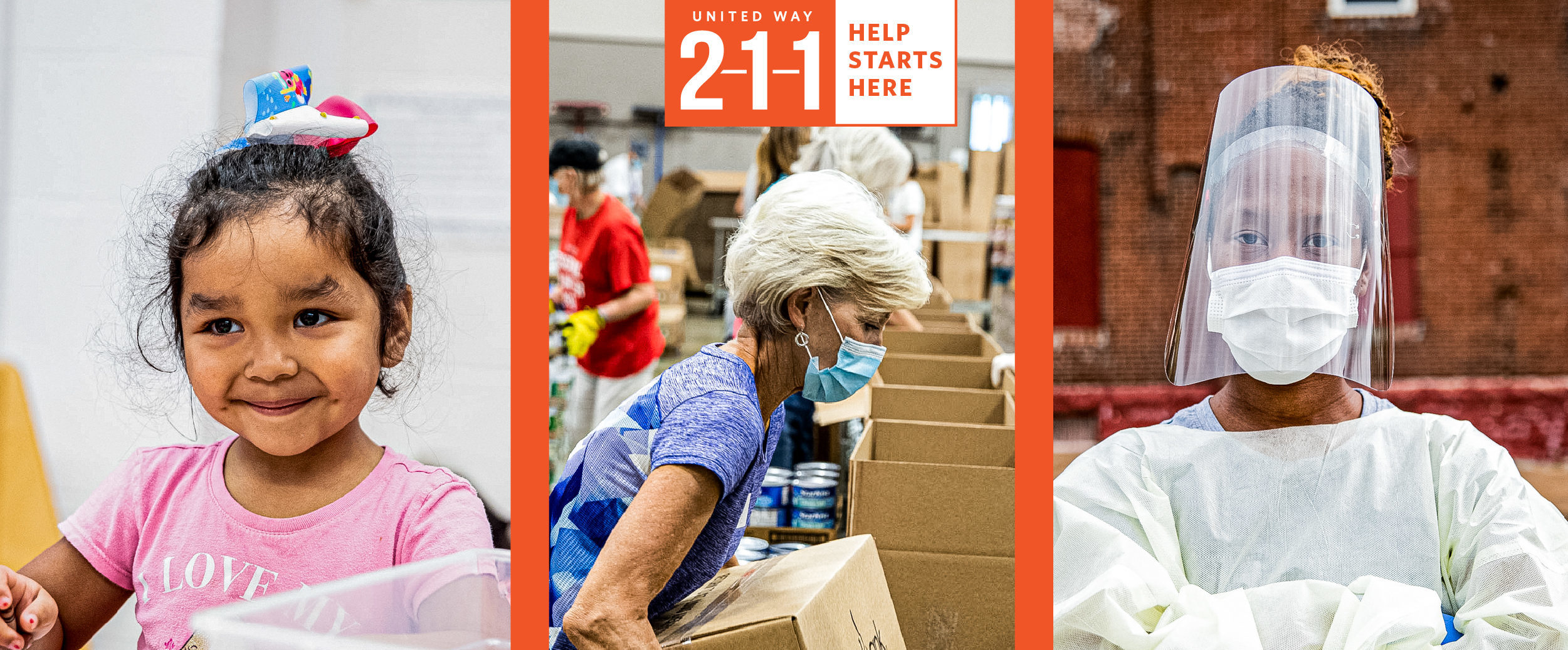United Way 2-1-1 is the crucial tool that our community needs to help local people navigate new and ongoing challenges. With a database of more than 24,000 programs and services throughout Missouri and Southwest Illinois, 2-1-1 connects local people with free, fast and confidential assistance to move from crisis to stability.
When COVID-19 hit the St. Louis region, 2-1-1 has become even more critical, as many people who were already vulnerable are even more at risk, and many others need help for the first time.
Whether in the everyday or in times of crisis, here’s how 2-1-1 builds a stronger community for everyone.
Connects individuals and families to critical resources in the community
2-1-1 provides critical help, from mental health supports to food and housing assistance to transportation and more, connecting local people to resources needed to thrive. With a goal of being accessible to each caller in the way that works best for them, 2-1-1 launched texting capabilities this past June, in addition to being available through phone, online chat and mobile app, with multilingual service for up to 250 different languages.
In total, 2-1-1 received more than 192,000 requests for assistance in 2020, a 54% increase compared to 2019. 2-1-1 helped more than 8,100 people keep food on the table, assisted 17,277 people in accessing healthcare and connected more than 4,100 people to transportation. 2-1-1 also partnered with local agencies to create a COVID-19 hotline, which provided up-to-date information about testing, re-opening guidelines, and much more to help nearly 13,899 people stay safe.
Coordinates crisis response efforts to help stabilize families
During times of crisis, many people need help with different needs, and hundreds of nonprofits offer assistance, each with varied expertise, programs and missions. A coordinated response is vital to help us all on the road to recovery and to ensure the right resources are delivered at the right times without duplicating efforts or wasting resources.
2-1-1 leads regional disaster response efforts by serving as a central information hub to route calls for help and as a source of real-time data to track trends and stay updated. For example, during COVID-19, the Regional Response Team and local COADs (Community Organizations Active in Disaster), including nonprofits, government agencies, businesses, and other community organizations, used 2-1-1 to know where and how to effectively use local resources to help those who need it most.
COADs also leverage 2-1-1 as a central information hub to route calls for help. Last fall, 2-1-1, in partnership with the Greater St. Louis Community Information Exchange, led the local efforts to distribute CARES Act support dollars. Together, they created a rapid response platform to coordinate and connect more than 10,000 St. Louis City and County families to rent and housing support so that they could stay safely in their homes.
Empowers organizations to work together for a greater impact
As a single source for comprehensive data and referrals, 2-1-1 brings organizations together, empowering them to collaborate for greater impact.
This includes a pilot program with the Lyft ridesharing service. Last year, the program used 2-1-1 to connect people without transportation access with rides to vital resources needed to survive, like getting to the grocery store to buy healthy food, making it to medical appointments, and obtaining and keeping jobs.
2-1-1 has also been used to develop and deploy the Greater St. Louis Community Information Exchange (CIE), which brings more than 40 nonprofits, health institutions and other community organizations onto a shared platform to provide wraparound care for those in need. Through CIE, 2-1-1 identifies all relevant needs for each caller and shares that information with network partners for proactive care. Each caller is connected to an entire network of programs and services to help with all unmet social determinants of health, and partners update the network with data and outcomes to ensure each caller’s goals are reached. It all adds up to a streamlined process, more efficient use of the network’s assets and helping people in a more complete way to reduce the need of the system.
Collects real-time data to provide the most help
In addition to connecting callers with needed community resources, 2-1-1 provides real-time, searchable data on community needs across 99 counties in Missouri and nine counties in Southwest Illinois. This data identifies trends in local individuals’ needs so that communities and organizations can direct resources to precise areas and prevent larger crises.
For example, the data can show where some needs, such as housing supports, are especially needed based on the counties or zip codes that place the most calls for help with rent or mortgage assistance. Using this data, nonprofits and other organizations have a better understanding of community needs and can come up with innovative solutions to help.
In January 2020, United Way released a comprehensive Community Needs Assessment (CNA), which utilized 2-1-1 data, the community’s voice and other qualitative data to reveal our region’s needs county by county. It also helped to understand how people experience challenges depending on where they live, their age, race and ethnicity, and other factors. The information is a vital tool available to the entire community to understand how we can use our resources and focus to support needs to achieve the greatest possible impact.
2-1-1 is committed to making sure needs are met and critical help is available every day. If you or someone you know needs help, contact 2-1-1 by calling or texting 1.800.427.4626 or visiting 211helps.org, where you can use an online chat, search directory or the mobile app.
Take action now:
- Read more about how one United Way 2-1-1 resource specialist helped a caller experiencing grief and homelessness get back on her feet.
- Discover how 2-1-1 helped a veteran meet a crucial need after a significant decline in health.
- Share this story with family and friends.
